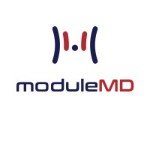You know, back in the day, doctors used to lug around hefty patient files and sift through mountains of paperwork. Remember those days? But then along came EMR Systems, and boy, did they shake things up!
So, what are these EMR Systems anyway? They’re short for Electronic Medical Record (EMR) or Electronic Health Record (EHR), and trust me when I say they’re nothing short of revolutionary. They’re these nifty digital platforms that store all of a patient’s health information in one secure spot. We’re talking electronic medical records software with history, diagnoses, medications, treatment plans, immunization dates, allergies, radiology images, and lab and test results. And that’s just scratching the surface!
Why should you care? Well, as someone who’s been to a doctor’s appointment (which is, like, everyone), you’ve been affected by an EMR System. These systems are a major part of how medical practices operate today, making it easy for your healthcare providers to track your health over time, manage clinical documentation, schedule appointments, manage medical billing together, and a whole lot more.
In short, EMR Systems have changed the game for medical practices, streamlining everything for medical providers and improving patient care across the board.
Key Takeaway: EMR Systems have revolutionized the way healthcare providers operate, making patient care more efficient, reliable, and organized. If you’ve ever been to a doctor’s office in recent years, you’ve benefited from an EMR System!

What’s in an EMR System?
Alright, now that we’ve piqued your interest in EHR Systems, it’s time to dig a bit deeper. Let’s unravel the different types of these systems. Just like you’d have different types of cars – sedans, SUVs, pickups – EMR Systems also come in various models. Mainly, we’re looking at two types here: On-premise and Cloud-based EMR Systems.
On-premise EMR systems are the heavy-duty pickup trucks of the EMR world. They’re installed right there on the computers in your healthcare provider’s office. That means all your data is stored on site, and the EMR software is managed by the practice’s own IT staff. It’s like having your very own library of patient info, but you’ve got to handle all the upkeep yourself.
Cloud-based EMR systems, on the other hand, are like those sleek, self-driving electric cars. They’re hosted on the provider’s servers and accessed via the internet. That means your healthcare provider can get to your electronic health records from anywhere, and they don’t have to worry about the IT side of things. It’s like keeping your library on a Kindle – less clutter, same amount of info.
Each of these systems has its pros and cons. On-premise systems offer more control, but they’re also more resource-intensive. Cloud-based systems are more flexible, but they depend on a reliable internet connection. So, it’s all about what fits your healthcare provider’s needs best.
Key Takeaway: EMR Systems come in two main flavors: on-premise and cloud-based. Each has its unique strengths, and the choice between the two depends largely on the specific needs and resources of a medical practice.

Key Features of EMR Systems
You know those Swiss army knives that have a tool for just about everything? That’s what EMR Systems are like. They’re packed with features that cater to every aspect of running a medical practice. Here’s a quick rundown of the most important ones:
Patient records management: This is the heart of any EMR System. It’s where all the patient info is stored and managed. From basic contact info and medical history to lab results and billing info, everything’s right there at your doctor’s fingertips.
Electronic prescriptions: No more squinting at illegible handwriting! With EMR Systems, prescriptions are digital, clear, and can be sent straight to your pharmacy. Talk about convenient!
Imaging management: Need to pull up that X-ray from last year? EMR Systems have got you covered. They store and manage all sorts of diagnostic images.
Appointment scheduling: Say goodbye to those annoying phone calls. EMR Systems let you book appointments online. Fast, easy, and no hold music!
Laboratory management: EMR Systems streamline lab orders and results. All the data is centralized, making it easy to keep track of tests.
Billing and coding: With EMR Systems, all the billing info is organized and accessible, which makes the whole payment process a lot smoother.
Reporting and analytics: Want to see trends in patient health? Need to report on practice performance? EMR Systems offer analytics tools for that.
Key Takeaway: EMR Systems are like Swiss army knives for medical practices, offering a wide range of features that streamline patient care, from record management and electronic prescriptions to appointment scheduling and analytics. It’s no wonder they’re a game-changer in healthcare!

EMR Systems: Why the Hype?
So we’ve established that EMR Systems have a ton of cool features. But you might still be wondering, “What’s the big deal? Why all the hype?” Well, let me tell you, it’s not just because they’re shiny and new. EMR Systems actually offer a bunch of benefits that make them totally worth the hype.
Improved patient care: First off, these systems are a major win for patient care. With all the patient info easily accessible and up-to-date, healthcare providers can make better-informed decisions and offer personalized treatment plans.
Increased efficiency and productivity: EMR Systems also help to streamline operations. No more time wasted searching for files or waiting for lab results. This means healthcare providers can focus more on their patients and less on admin tasks.
Enhanced patient satisfaction: And let’s not forget about us, the patients! We also get a better experience, with easier appointment scheduling, quicker prescription refills, and more transparent communication.
Increased revenue: With streamlined billing and the ability to analyze practice trends, healthcare providers can optimize their operations and increase their revenue.
Reduced errors and costs: Digital records are less prone to errors than their paper counterparts. Plus, they can be accessed from anywhere, reducing the need for physical storage space.
So yeah, it’s safe to say that the hype around EMR Systems is well-deserved!
Key Takeaway: EMR Systems are more than just a cool tech trend. They bring significant improvements to patient care, operational efficiency, and even the bottom line. No wonder they’ve become such a hot topic in the healthcare world!

Picking the Right EMR System: What to Look Out For
Choosing an EMR System is a bit like picking a new phone. There are loads of options out there, and you need to find the one that fits your needs best. Here are a few factors to consider:
Cost: Just like any investment, you’ve got to look at the price tag. Remember, it’s not just about the upfront cost. Consider the long-term costs too, like maintenance and upgrades.
Ease of use: You don’t want a system that’s going to give you a headache every time you use it. Look for a user-friendly interface that won’t require a PhD to navigate.
Integration with other systems: Your EMR System needs to play nice with your other software. So make sure it can integrate smoothly with your practice’s existing systems.
Customization options: Every practice is different, and you want a system that can cater to your unique needs. Look for a system that allows for custom fields and templates.
Security and compliance: This one’s a biggie. Given the sensitive nature of medical records, your system needs to have robust security measures and be compliant with healthcare regulations.
Now, this might seem like a lot to think about. But remember, picking the right EMR System is a crucial decision that can make a huge difference to your medical practice.
Key Takeaway: Choosing the right EMR System is a decision that should be made carefully. Key considerations include cost, ease of use, integration capabilities, customization options, and security compliance. This way, you’ll ensure you pick the system that fits your practice like a glove!

Navigating the Speed Bumps: Challenges of EMR System Implementation
So, you’ve decided to implement an EMR System. You’re excited about all the benefits and you’ve picked out the perfect system for your needs. But hold up! Before you jump in, let’s talk about some of the challenges you might face along the way:
Resistance to change: Let’s face it, change can be scary, and getting used to a new system can be tough. There might be some resistance from staff, especially if they’re used to doing things the old-fashioned way.
Data migration complications: Moving all your existing patient records into the new system is no small task. It can be time-consuming and there’s always a risk of data loss or corruption.
Staff training requirements: This isn’t just about installing new software. It’s also about teaching your staff how to use it. This requires a solid training program and ongoing support.
Maintenance and software updates: Like any piece of tech, EMR Systems require regular updates and maintenance. This can be a bit of a learning curve, especially if you’re used to paper records.
Remember, every big change comes with its challenges. But don’t let these potential speed bumps deter you. With the right planning, practice management software and support, you can navigate them and reap the benefits of your new EMR System.
Key Takeaway: Implementing an EMR System is a significant change that can come with challenges, from resistance among staff and data migration issues, to training needs and ongoing maintenance. But with the right strategies, these challenges can be managed, paving the way for a smoother transition to this game-changing tech.

The Top Contenders: Popular EMR Systems in the Market
Ready to start your EMR System adventure? Great! Here are three of the top players in the market right now that are worth checking out:
Epic Systems: Known for its comprehensive offerings, Epic Systems is loved by large hospitals and healthcare organizations. This system provides modules for a myriad of specialties and allows for seamless interoperability between healthcare providers. While it might be a bit pricey, the robust features make it a popular choice.
Cerner: Cerner is another giant in the EMR world, with an extensive portfolio of solutions for healthcare organizations of all sizes. Known for its strong support and continuous updates, Cerner focuses on interoperability and offers advanced data analytics capabilities.
athenahealth: If you’re running a small to medium-sized practice, athenahealth might be your pick. It offers a cloud-based EMR solution with a focus on ease of use, accessibility, and seamless billing integration. The system is also known for its excellent customer service.
Remember, these are just a few of the options out there. It’s all about finding the EMR System that suits your practice’s specific needs and budget.
Key Takeaway: Epic Systems, Cerner, and athenahealth are three leading EMR Systems on the market. Each offers unique strengths, from comprehensive modules and strong support, to ease of use and excellent customer service. The perfect fit depends on your practice’s specific needs and resources. Do your research to make an informed choice.

Wrapping Up: The Future of EMR Systems
From understanding what EMR Systems are and their key features, to considering their benefits and challenges, we’ve traveled quite a distance in our journey. We even got a snapshot of the leading systems on the market. But as with any tech-driven field, the real excitement lies in what’s ahead. So, let’s take a moment to look towards the horizon and envision what the future might hold for EMR Systems.
AI-Powered Decision Support
Artificial intelligence is set to play a huge role in the future of EMR Systems. By using health information technology harnessing the power of machine learning algorithms, future EMR systems could offer AI-powered decision support, helping healthcare providers to diagnose diseases and devise treatment plans.
Imagine a system that can analyze a patient’s medical history, symptoms, and test results, and then offer a list of potential diagnoses and treatment options. This wouldn’t replace human judgment, but it could significantly aid it, offering suggestions and reminders to ensure that nothing is overlooked.
Advanced Predictive Analytics
Another major development in the horizon is the application of predictive analytics. This could allow EMR Systems to predict patient trends and outcomes based on historical data.
For example, by analyzing a patient’s medical history, lifestyle factors, and environmental conditions, a predictive model might be able to forecast potential health risks or diseases. This can pave the way for preventative medicine, where interventions can be made early on, before a disease fully manifests.
Enhanced Interoperability
Interoperability, or the ability of different systems and software applications to communicate and exchange data, is another area set for growth. Today’s systems already allow some level of data sharing, but the future holds promise for a much more integrated and collaborative healthcare sector.
A patient’s healthcare journey often involves the care coordination multiple touchpoints – general practitioners, specialists, hospitals, pharmacies, and even social care providers. Enhanced interoperability would mean that every actor in this journey could seamlessly access and update a patient’s records, facilitating smoother transitions and more comprehensive care.
Personalized Patient Engagement
As healthcare continues to embrace a more patient-centric approach, we can also anticipate EMR systems to evolve in this direction. This could translate to features that provide personalized health and wellness advice, allow easier access to health records, become patient portals or facilitate virtual consultations.
In practice management in essence, patients might be able to play a more active role in their healthcare, aided by EMR systems that engage them directly, educate them about their health, and make healthcare management more accessible and efficient.
Increased Use of Blockchain
With the growing need for secure data exchange, blockchain technology might also find its way into EMR systems. The immutable nature of blockchain can offer ehr software an added level of security, ensuring that once data is recorded, it can’t be tampered with. This can particularly help in managing consent for data sharing, as well as ensuring the integrity of the medical record over time.
Key Takeaway: The future of EMR Systems holds immense promise, with advancements like AI-powered decision support, predictive analytics, enhanced interoperability, personalized patient engagement, and potentially, the incorporation of blockchain. These technologies will continue to push the boundaries of how we manage and deliver healthcare, making it more efficient, personalized, and secure.
The digital transformation in healthcare is just picking up steam, and EMR Systems are set to be a key driver of this exciting revolution. As we stand on the cusp of these innovations, the future certainly looks bright for healthcare providers and patients alike.
So there you have it – your comprehensive guide to EMR Systems, past, present, and future. Remember, the journey to implementing an EMR system in your practice might seem complex, but with the incredible potential they hold for medical professionals, it’s an adventure that’s well worth embarking on. Until next time, happy EMR hunting and may your practice be as healthy as the patients you’re aiming to heal!
Embracing the Digital Health Revolution
Remember, while adopting a new system like EMR can be daunting, it’s part of a wider digital transformation that’s revolutionizing healthcare for the better. As we continue to embrace the power of technology, we’ll see patient care become more efficient, accurate, and personalized.
In the end, isn’t that what healthcare is all about? Taking care of mental health of our patients as effectively as possible. And if a tool like EMR can help us do that better, then it’s a tool well worth embracing.
Here’s to a future where healthcare is a seamlessly coordinated effort, where patients are empowered, and where healthcare providers are equipped with the best tools to do what they do best – heal.
Key Takeaway: EMR Systems represent a significant leap forward in healthcare delivery, powering better patient outcomes and more efficient practices. As we look to the future, the integration of advanced technologies such as AI, predictive analytics, enhanced interoperability, and personalized patient engagement into these systems promises to revolutionize healthcare further. The future of healthcare is digital, and EMR Systems are lighting the path!
So, as we wrap up our journey into the world of EMR Systems, the key message to take home is this: stay informed, be adaptable, and embrace the change. Because the future of healthcare is here, and it’s digital.

Frequently Asked Questions
What is an EMR System?
An EMR (Electronic Medical Record) System is a digital version of electronic medical records of a patient’s paper chart. It contains the patient’s medical history, diagnoses, medications, treatment plans, immunization dates, allergies, radiology images, and laboratory and test results.
How does an EMR System improve patient care?
EMR Systems improve patient care by using medical billing software and revenue cycle management software offering accurate, up-to-date, and complete information about patients at the point of care. They enable efficient and quick access to patient records, reducing the chances of errors and providing secure exchange of patient information between healthcare professionals.
What’s the difference between on-premise and cloud-based EMR Systems?
On-premise EMR Systems are installed locally on your organization’s hardware and servers, while cloud-based EMR Systems are hosted on the vendor’s servers and accessed via the web. On-premise solutions often involve upfront costs for hardware, licensing, and setup, while cloud-based solutions typically follow a subscription-based pricing model.

Are EMR Systems secure?
Yes, reputable EMR Systems adhere to strict privacy and security standards, including HIPAA (Health Insurance Portability and Accountability Act) in the US. They use security measures like data encryption, user authentication, and audit trails to ensure patient data is secure.
What are some popular EMR Systems?
There are many EMR Systems in the market. Some of the popular ones include Epic Systems, Cerner, and athenahealth. The right system for you depends on your specific needs, such as the size and specialty of your practice, budget, and specific feature requirements.
What’s the future of EMR Systems?
The future of EMR Systems is expected to include advancements like AI-powered decision support, predictive analytics, enhanced interoperability, personalized patient engagement, and potential incorporation of blockchain technology. These improvements will continue to revolutionize the way healthcare is managed and delivered.













